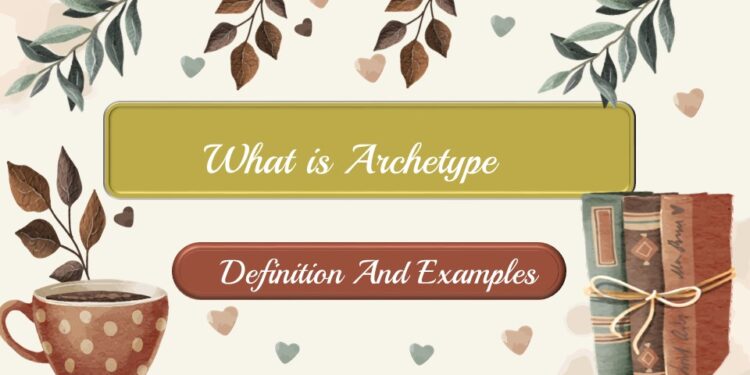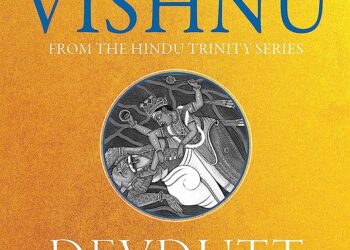What is Archetype Definition And Examples
An archetype refers to a fundamental and universally recognizable pattern or symbol that is present in various forms of literature, mythology, folklore, and human psychology. It is a concept that was first introduced by the Swiss psychologist Carl Jung, who believed that archetypes represent deeply ingrained, inherited, and unconscious patterns of thought, behavior, and perception that are shared by all individuals and across different cultures.
The term “archetype” is derived from the Greek words “arche,” meaning “original” or “primitive,” and “typos,” meaning “pattern” or “model.” Archetypes can be thought of as primal images or symbols that are deeply embedded in the collective unconscious, a concept also developed by Jung. What is Archetype Definition And Examples The collective unconscious refers to the part of the human psyche that contains shared, inherited, and instinctual elements of the human experience.
Archetypes are considered to be universal because they emerge across cultures and time periods, often taking on similar forms and representing similar themes and ideas. What is Archetype Definition And Examples They tap into fundamental aspects of the human experience, such as love, fear, power, and transformation. What is Archetype Definition And Examples While archetypes can take various forms, they tend to represent broad categories of characters, situations, or symbols that resonate with people on a deep, intuitive level.
Also Read-
- What is Anthropomorphism Definition And Examples
- What is Antagonist Definition And Examples
- What is Anaphora Definition And Examples
- What is Anachronism Definition And Examples
There are numerous archetypes that appear in different mythologies, religious texts, and literary works. Some of the most common archetypes include the hero, the mentor, the trickster, the wise old man/woman, the shadow, the mother, and the lover. What is Archetype Definition And Examples Each archetype embodies certain traits, motivations, and struggles that are recognizable across different narratives and cultures.
The hero archetype, for example, represents the individual who embarks on a journey or quest, faces challenges and obstacles, and ultimately achieves personal growth, transformation, and triumph. What is Archetype Definition And Examples This archetype can be found in myths and stories from various cultures, such as the Greek hero Hercules, the biblical figure of Moses, and the modern superhero archetype found in comic books and movies.
The mentor archetype, on the other hand, represents a wise and knowledgeable figure who guides and supports the hero on their journey. What is Archetype Definition And Examples This archetype can be seen in characters like Gandalf from J.R.R. Tolkien’s “The Lord of the Rings” and Obi-Wan Kenobi from the “Star Wars” franchise. The mentor provides guidance, imparts wisdom, and helps the hero navigate the challenges they face.
Archetypes serve several important functions in literature, mythology, and human psychology. They provide a framework for storytelling, allowing writers to tap into deep-seated human experiences and create characters and narratives that resonate with audiences. What is Archetype Definition And Examples Archetypes also help individuals make sense of their own lives and experiences by providing familiar symbols and patterns that they can relate to.
In addition, archetypes have a profound psychological impact. What is Archetype Definition And Examples They can evoke strong emotional responses and tap into the collective unconscious, triggering a sense of familiarity and resonance. What is Archetype Definition And Examples Archetypes also play a role in personal development and individuation, the process through which individuals strive to become their true selves by integrating different aspects of their personality and confronting their shadows or hidden selves.
Furthermore, archetypes are not limited to literature and mythology. What is Archetype Definition And Examples They can be observed in various aspects of human life, including art, dreams, religion, and even marketing and branding. What is Archetype Definition And Examples Advertisers often use archetypal figures and symbols to evoke specific emotions, create connections with consumers, and tap into universal human desires and fears.
While archetypes provide a rich and powerful framework for understanding human experiences, it is essential to recognize that they are not fixed or static. What is Archetype Definition And Examples They can evolve and take on different forms depending on cultural context, individual interpretation, and societal changes. What is Archetype Definition And Examples Archetypes continue to be explored and reimagined in contemporary literature, films, and other creative mediums, reflecting the ongoing relevance and impact of these universal patterns and symbols.
Examples Of Archetype
There are the some examples:-
- The Hero: This archetype represents the protagonist who embarks on a journey, faces challenges, and ultimately achieves a significant goal. Examples include Odysseus from Homer’s “The Odyssey,” Harry Potter from J.K. Rowling’s series, and Luke Skywalker from the “Star Wars” franchise.
- The Mentor: This archetype is a wise and experienced figure who guides and supports the hero on their journey. Examples include Merlin from the Arthurian legends, Yoda from the “Star Wars” franchise, and Professor Dumbledore from the Harry Potter series.
- The Trickster: This archetype is characterized by mischief, cunning, and unpredictability. The trickster often disrupts the status quo and challenges authority. Examples include Loki from Norse mythology, the Cheshire Cat from Lewis Carroll’s “Alice’s Adventures in Wonderland,” and the Joker from DC Comics.
- The Wise Old Man/Woman: This archetype represents wisdom, insight, and guidance. The wise old man or woman often serves as a source of knowledge and advice for the protagonist. Examples include Gandalf from J.R.R. Tolkien’s “The Lord of the Rings,” the Oracle in Greek mythology, and Dumbledore from the Harry Potter series.
- The Shadow: This archetype represents the darker, repressed, or hidden aspects of an individual’s personality. It embodies the fears, desires, and impulses that the individual may struggle to acknowledge or confront. Examples include Darth Vader from the “Star Wars” franchise, Mr. Hyde from Robert Louis Stevenson’s “The Strange Case of Dr. Jekyll and Mr. Hyde,” and Gollum from J.R.R. Tolkien’s “The Lord of the Rings.”
- The Mother: This archetype symbolizes nurturing, compassion, and unconditional love. It represents the maternal figure who provides care, support, and emotional sustenance. Examples include Demeter from Greek mythology, Molly Weasley from the Harry Potter series, and Ma Joad from John Steinbeck’s “The Grapes of Wrath.”
- The Lover: This archetype embodies passion, romance, and desire. It represents the force that drives individuals to seek connection, intimacy, and fulfillment in relationships. Examples include Romeo and Juliet from William Shakespeare’s play, Tristan and Isolde from Arthurian legends, and Scarlett O’Hara from Margaret Mitchell’s “Gone with the Wind.”
Conclusion
In conclusion, archetypes are fundamental patterns or symbols that are deeply ingrained in human culture, literature, mythology, and psychology. What is Archetype Definition And Examples They represent universal themes, characters, and situations that resonate with individuals on a deep and intuitive level. What is Archetype Definition And Examples Archetypes provide a framework for storytelling, aid in personal development, and help individuals make sense of their experiences. What is Archetype Definition And Examples They continue to play a significant role in literature, art, dreams, and various aspects of human life.
FAQ.
Q. Are archetypes limited to literature and mythology?
Ans. No, archetypes can be observed in various aspects of human life, including art, dreams, religion, and even marketing and branding. They provide a way to tap into universal human experiences and create connections with individuals.
Q. Can archetypes evolve or change over time?
Ans. Yes, archetypes can evolve and take on different forms depending on cultural context, individual interpretation, and societal changes. They are not fixed or static but are subject to reinterpretation and reimagining.
Q. Are archetypes the same across different cultures?
Ans. While there are common archetypes that appear across different cultures, variations and unique cultural expressions of archetypes can also be observed. The core themes and symbols may remain similar, but the specific manifestations may differ.
Q. Can individuals embody multiple archetypes?
Ans. Yes, individuals can embody multiple archetypes simultaneously or at different stages of their lives. Archetypes represent different aspects of the human psyche, and individuals can resonate with and express various archetypal qualities.
Q. Are archetypes solely based on fictional characters?
Ans. No, archetypes can be found in both fictional and real-life individuals. They represent fundamental patterns and symbols that are deeply rooted in human psychology and can manifest in both fictional narratives and real-world personalities.
















